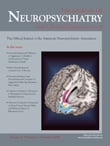N eurodevelopmental and genetic disorders detected in childhood continue to affect patients and their families throughout the patient’s life. The aim of Drs. Goldstein and Reynolds, editors of this book, is to present a review of neurodevelopmental and genetic disorders in adults. They believe that “even those with significant genetic conditions can and do overcome adversity, and are increasingly able to live a satisfying and fulfilled life.”
The book consists of three parts. Part 1 is an introductory review of basic genetic principles, of neuropsychological assessment and of basic neuroimaging of genetic disorders. Part 2 includes chapters on disorders where the major abnormalities are neurobehavioral (“Autism,” “Attention Deficit Hyperactivity Disorder”, “Learning Disabilities,” “Anxiety Disorders,” “Depression,” Substance Use and Abuse”). Part 3 has chapters on disorders with physical as well as neurobehavioral manifestations, mostly congenital syndromes including Turner, Williams, Noonan, Down, Klinefelter, Rett, Lesch-Nyhan, Prader-Willi, Neurofibromatosis and Progeroid syndromes, and a chapter on Sickle Cell disease, a condition which carries a high risk for neurological and neurobehavioral complications. Each of these chapters discusses genetic and other biological data, neurobehavioral manifestations, diagnosis and treatment.
Drs. Goldstein and Reynolds previously co-edited a similar book, Neurodevelopmental and Genetic Disorders in Children, published in 1999. The genetic and neurodevelopmental conditions reviewed in their current book almost entirely parallel the conditions covered by their first book, and most of the chapters are contributed by the same authors (sometime along with new authors).
The introduction chapters in Part 1, including the chapter, “Neuropsychological Testing,” and the chapter, “Genetic Principles,” are well written and provide a good overview of genetic principles and neuropsychological assessment. The chapter, “Neuroimaging and Genetic Disorders,” gives a very short description of the neuroradiological findings in various genetic disorders and concludes with a statement that “increased or decreased brain volume and subtle focal structural brain abnormalities probably represent aberrant neuronal organization that is diffuse and that results in characteristic cognitive and behavioral deficits associated with a genetic disorder.” It fails to add information beyond that which could have been described in the individual chapters reviewing the specific neurodevelopmental syndromes.
The chapters on learning disabilities, attention deficit hyperactivity disorder, autism and Tourette’s disorder in Part 2 are informative and detailed. But, with the exception of the chapter on autism, the book falls short of its aim to focus on the adult form of these conditions, and on their long-term prognosis. Part of this deficit probably relates to the scarcity of available information on these topics.
The chapters on genetic syndromes in Part 3 demonstrate that some of these syndromes (e.g., Turner’s syndrome, Williams’ syndrome) produce relatively specific cognitive disorders rather than an overall reduced level of cognitive development and intellect, suggesting specific gene-behavior association. Some of the chapters, though, are almost identical to the corresponding chapters in the pediatrics 1999 book with a few additions and updates. There is not an adequate focus on the adult manifestations of these syndromes.
To conclude, does the book fulfill its objectives? Only partially. Overall it provides an updated edition of the first book, Neurodevelopmental and Genetic Disorders in Children, published in 1999. Although it has some supplemental information on adults with these conditions, their neurobehavioral problems do not appear to be its primary focus. Similarly, although there are some discussions of prognosis and outcome, there is not enough information in the book for the reader to conclude that “even those with significant genetic conditions can and do overcome adversity, and are increasingly able to live a satisfying and fulfilled life.”

